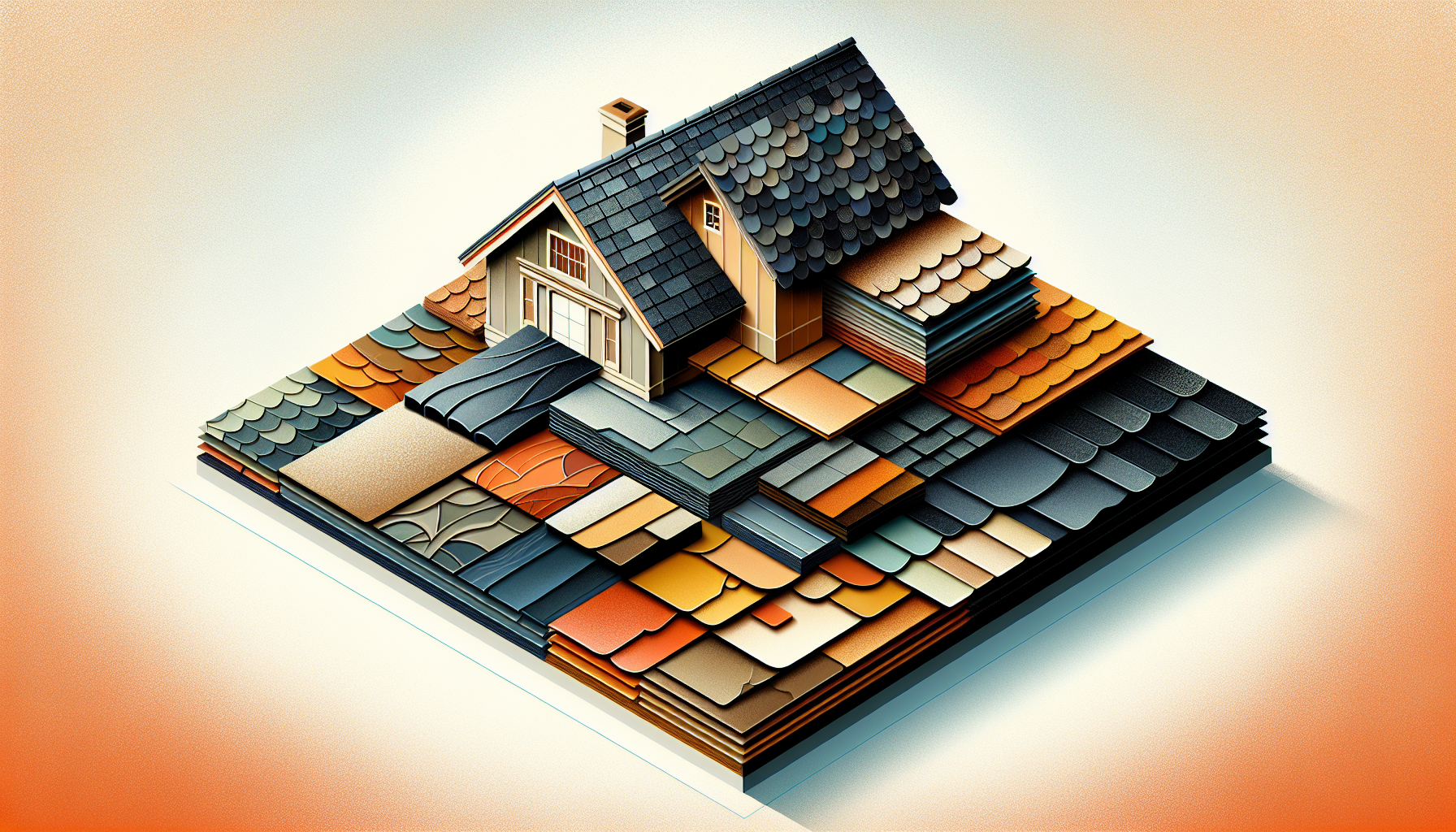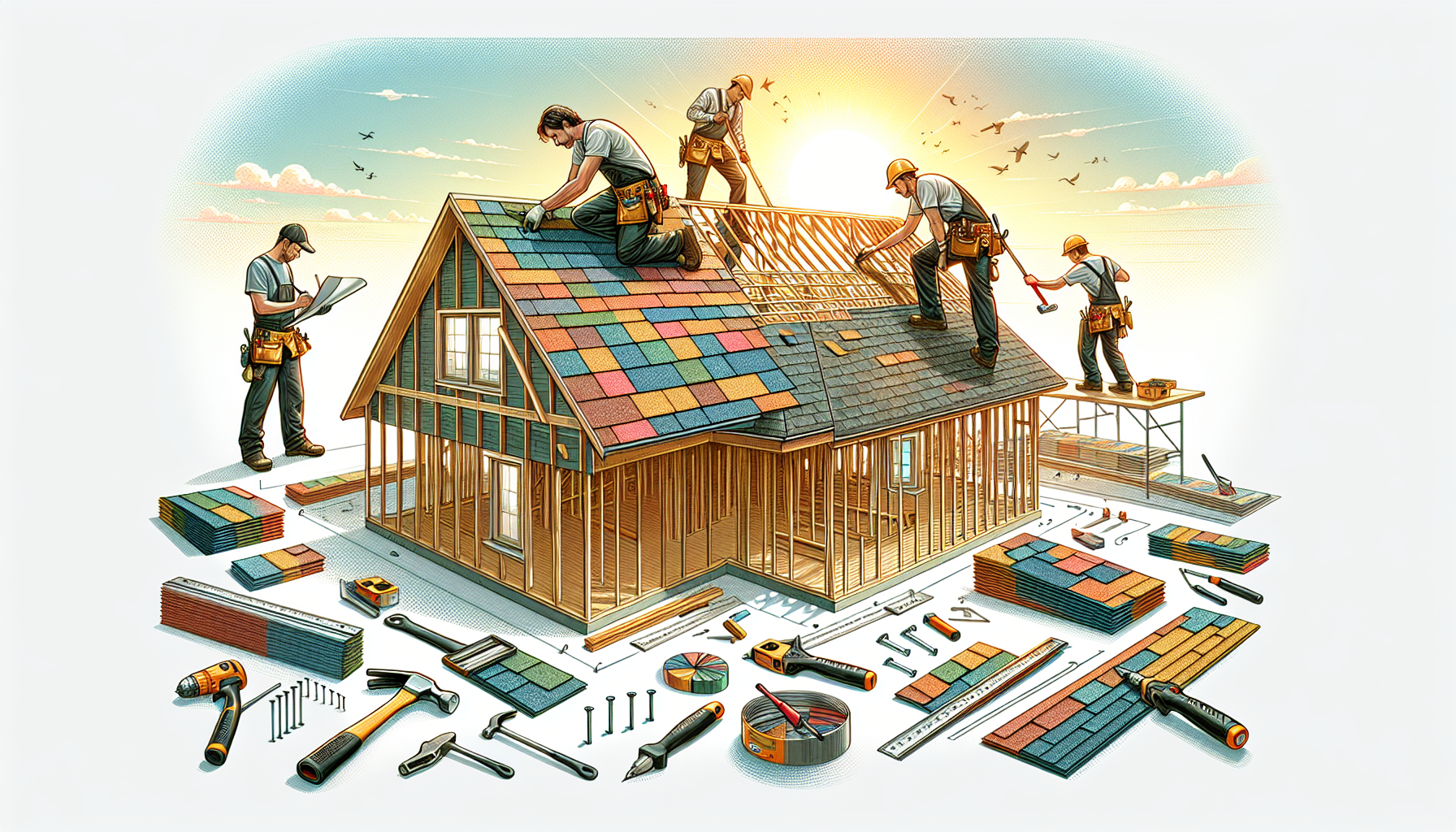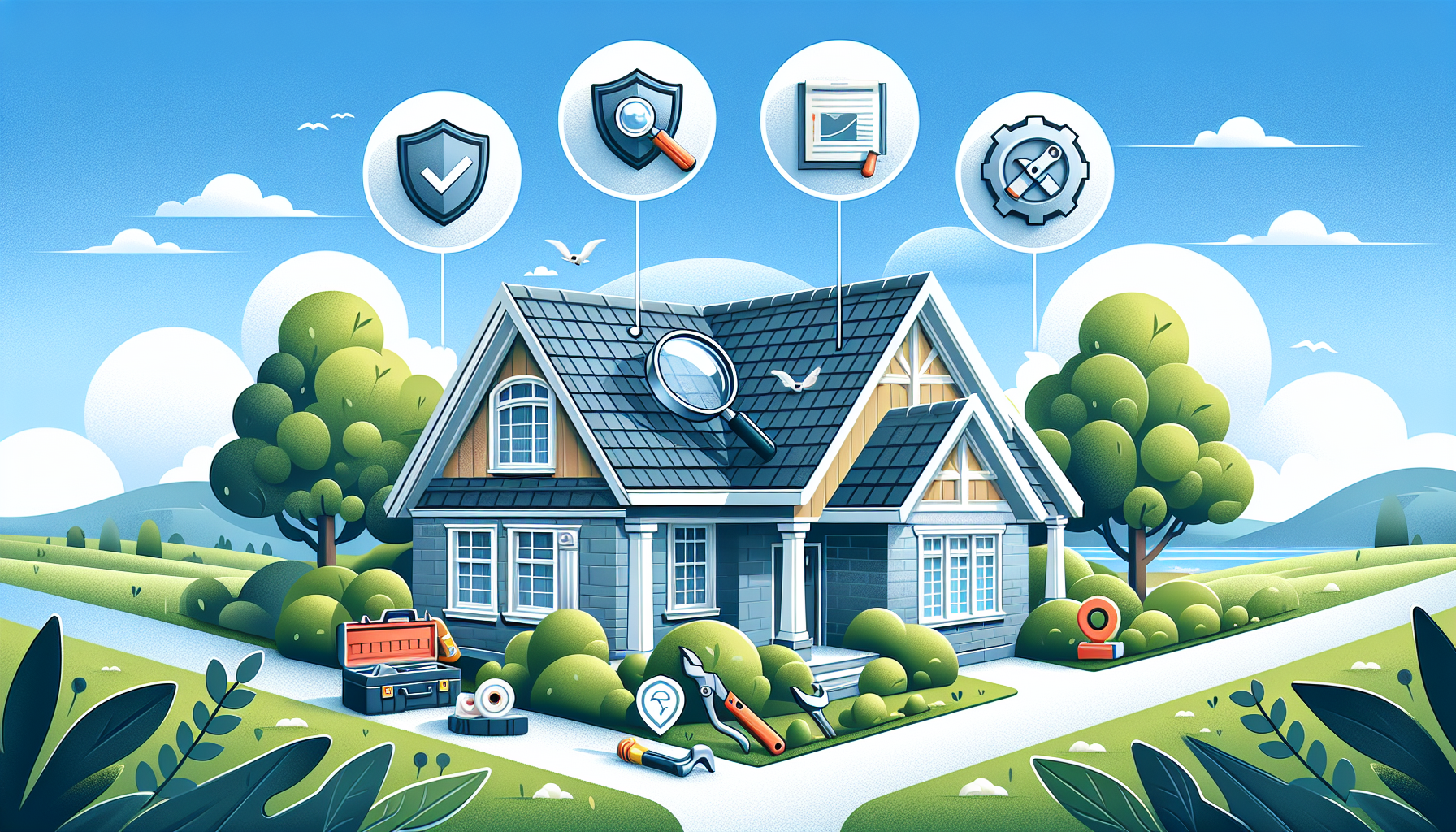Need to choose the right roof for your home? This guide outlines the pros and cons of different roofing materials, details the installation process, and provides tips on costs and maintenance. Get informed to make the best choice for a durable, long-lasting roof.
Key Takeaways
- Different roofing materials, such as asphalt shingles, metal, wood shake, slate, and clay tiles, offer distinct advantages and challenges, impacting durability, cost, and aesthetics.
- The roof installation process involves meticulous steps, starting from preparation and removal of old materials to installation and final inspection, all of which are crucial for a durable outcome.
- Regular maintenance, including inspections and immediate repairs, is essential for extending the life of the roof and preventing costly damage over time.
Popular Roofing Materials Explained

When it comes to roofing, the material you choose can make all the difference. Each type of roofing material offers unique advantages, whether it’s budget-friendliness, durability, or aesthetic appeal. Understanding these differences can help you make an informed decision when it’s time for a new roof.
This guide covers popular roofing materials like asphalt shingles, metal roofing, wood shake, slate tiles, and clay or concrete tiles. Each material has characteristics that suit various applications and climates.
Asphalt Shingles
Asphalt shingles are a favorite among homeowners for their low cost and versatility. Available in various styles, they can complement a wide range of home designs. Their lightweight nature makes them relatively easy to install and replace, which is a boon for any homeowner looking to save on labor costs.
However, asphalt shingles come with their own set of challenges. They are susceptible to damage from strong winds and extreme temperature changes, which can cause them to crack and deteriorate over time. Additionally, their lifespan is shorter compared to other roofing materials, and they are best installed in warmer weather to avoid material damage.
Metal Roofing
Metal roofing stands out for its durability and resistance to extreme weather conditions. Common materials like aluminum and steel are known for their longevity, often lasting between 40 to 80 years, which significantly outlasts traditional shingles. This long lifespan makes metal roofing a cost-effective option in the long run.
A significant benefit of metal roofing is its energy efficiency. Metal roofs reflect sunlight, helping to reduce cooling costs during the hot summer months. Although the initial investment can be higher, the low maintenance needs and durability make it a wise choice for many homeowners.
Wood Shake
Wood shake roofing is an excellent option for those who appreciate a natural, rustic look. It enhances the aesthetic appeal of various architectural styles, giving homes a unique and charming appearance. Additionally, wood shakes provide good insulation, helping to maintain indoor temperatures and potentially lowering energy bills.
However, wood shakes require regular maintenance to prevent decay and pest infestation. Moisture and insects can significantly damage the shakes if not properly cared for, making regular inspections and treatments essential for preserving their longevity.
Slate Tiles
Slate tiles are renowned for their impressive longevity, often exceeding 100 years when properly installed. This makes them one of the most durable roofing materials available. Slate tiles also offer a timeless, elegant look that can enhance the overall aesthetic of your home.
However, the installation of slate roofs can be quite expensive. The heavy weight of the tiles often requires structural reinforcements, adding to the overall cost. Additionally, specialized labor is needed for installation, which further increases the expense.
Clay and Concrete Tiles
Clay and concrete tiles are highly durable and fire-resistant, making them ideal for warmer climates. With proper care, these tiles can last over 50 years, with clay tiles sometimes exceeding 100 years. Their durability makes them a worthwhile long-term investment.
One of the distinguishing features of clay tiles is their lower absorbency compared to concrete tiles, which makes them more resistant to mildew and moisture damage. However, their heavy weight requires a robust roofing structure to support them, similar to slate tiles.
Roof Installation Process

The roof installation process is a meticulous one, involving multiple steps to ensure a successful and durable outcome. It begins with thorough preparation, where all necessary materials and tools are gathered, and the site is prepared for the work ahead. This stage is crucial for setting the stage for efficient and effective installation.
Following preparation, the old materials are removed, and the new roofing materials are installed. This phase requires careful handling to avoid damaging the new materials and ensuring proper alignment and sealing.
The final step is a thorough inspection to ensure that everything is in place and that the roof will provide the necessary protection and durability.
Cost Considerations for a New Roof

Understanding cost considerations for a new roof is crucial for planning and budgeting. The size and complexity of the roof significantly impact the overall installation cost, with larger and more intricate designs requiring more materials and labor. Flat roofs generally cost less to install than pitched roofs due to their simpler construction.
In addition to material and labor costs, there are other expenses to consider, such as debris removal and permits. These fixed expenses can make the cost per square foot higher for partial roof replacements. Off-season labor prices can also provide savings, as demand for labor is typically lower during these times.
Material Costs
The cost of roofing materials varies widely, ranging from $3 to $6 per square foot for asphalt shingles to much higher prices for premium materials like slate and metal. The cost range for roof replacement at the national level is between $4 and $11 per square foot. This range reflects the average expenses associated with such a project. Choosing energy-efficient materials like metal roofs can also provide long-term savings on cooling costs.
For example, installing a three-tab composite roof for a small home may cost around $6,000. Detailed estimates should break down labor, materials, and any additional costs to clarify the total project expense.
Labor and Installation
Labor costs can vary significantly based on the complexity of the roof design. Intricate angles and multiple features can increase labor costs due to the additional time and skill required. A simpler roof design typically translates to lower labor costs, making it more economical.
Roofs with a steep pitch may require additional safety measures and skilled labor, leading to higher installation costs. Flat roofs, on the other hand, usually incur lower installation costs due to their reduced angle and easier work conditions.
Additional Expenses
Planning a roofing project requires accounting for various additional expenses that may arise. Permit fees are required for legal compliance, and inspections ensure the quality and safety of the work done. These costs can accumulate, so include them in your budget.
Additional costs may include expedited service premiums and potential repairs to existing structures like gutters or metal flashing. By anticipating these expenses, you can avoid unexpected financial strain during your roofing project.
Maintenance and Repair Tips

Regular maintenance is key to prolonging the life of your roof and ensuring it performs well over the years. Here are some essential tasks to consider:
- Routine inspections
- Cleaning gutters
- Trimming tree branches
- Proper ventilation
- Moisture management
These tasks are critical to prevent damage and maintain the roof’s integrity.
We’ll cover specific tips for regular inspections, common repairs, and preventative measures to help you keep your roof in top condition.
Regular Inspections
Regular roof inspections help catch issues early, preventing them from escalating into bigger problems. Inspecting roofs every three to four years, especially after severe weather, helps identify potential damage. During inspections, pay special attention to areas like flashing and vent pipe seals, which are prone to wear.
Inspections can identify problems like damaged flashing or clogged gutters early, preventing costly repairs later.
Common Repairs
Common repairs for roofs include:
- Fixing leaks, which is crucial to prevent water damage to surrounding structures
- Replacing damaged shingles promptly to prevent water from seeping beneath and causing extensive damage
- Addressing drainage issues
Flat roofs, if not properly drained, can lead to water pooling, increasing the risk of leaks and necessitating more frequent maintenance. A flat roof requires careful attention to drainage to avoid these issues.
Preventative Measures
Preventing moss and algae growth involves treating roofs with solutions like chlorine bleach and ensuring regular maintenance in shaded, moist environments. Trimming tree branches near the roof can prevent damage to shingles from rubbing, especially during windy conditions. Clearing organic debris from the roof biannually helps prevent moisture retention, which can lead to shingle damage.
Regular checks of wall cladding and windows for watertightness can prevent moisture infiltration after heavy rainfall. Inspecting flashing for damage or deterioration ensures proper sealing at roof intersections, preventing leaks in walls.
Choosing the Right Roofing Contractor

Selecting the right roofing contractor is crucial for a successful roofing project. A reliable contractor should have a good reputation and positive reviews from past clients. Researching referrals, checking licenses, and reviewing backgrounds are essential steps in the selection process.
Hiring a contractor from your local area can ensure quicker response times and better familiarity with local building codes and climate conditions. For instance, Buckhead Roofing is known for its excellence in craftsmanship and customer service, ensuring a high-quality roofing experience.
Summary
In summary, choosing the right roofing material involves considering factors like cost, durability, and maintenance needs. Asphalt shingles, metal roofing, wood shake, slate tiles, and clay or concrete tiles each offer unique benefits and challenges. Understanding the installation process and cost considerations can help you make an informed decision.
Regular maintenance and choosing the right contractor are essential steps to ensure the longevity and performance of your roof. By following these guidelines, you can protect your investment and enjoy the benefits of a well-maintained roof for years to come.